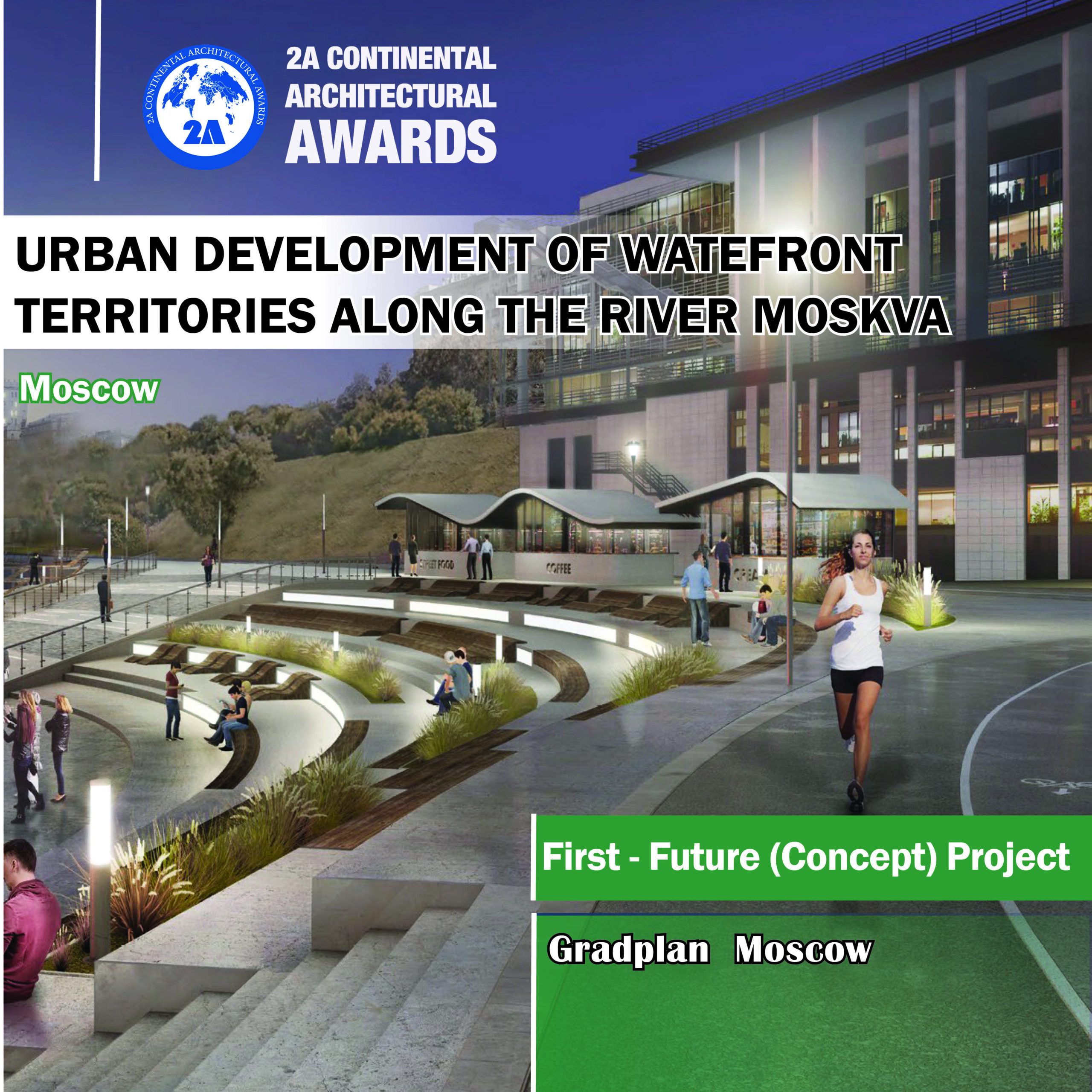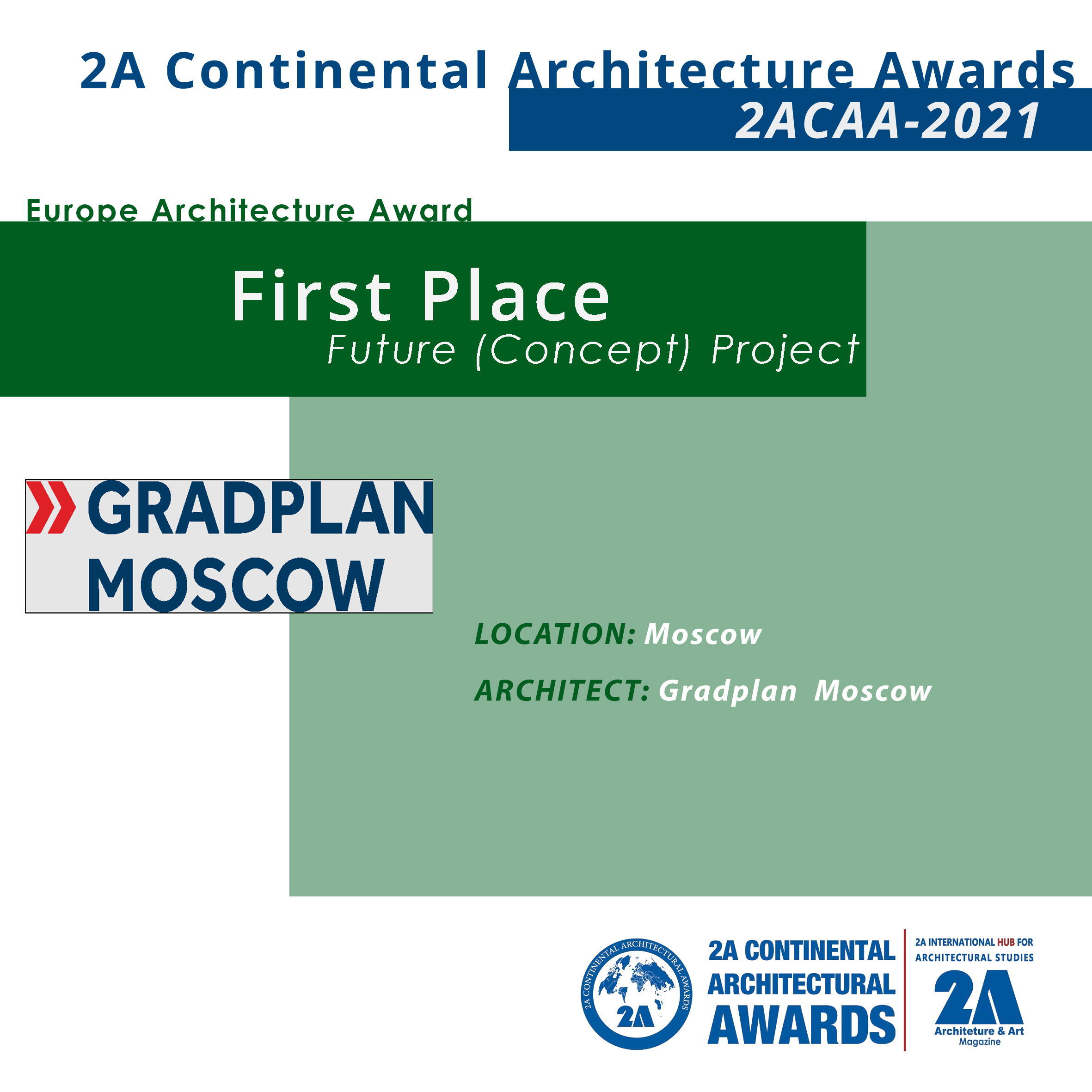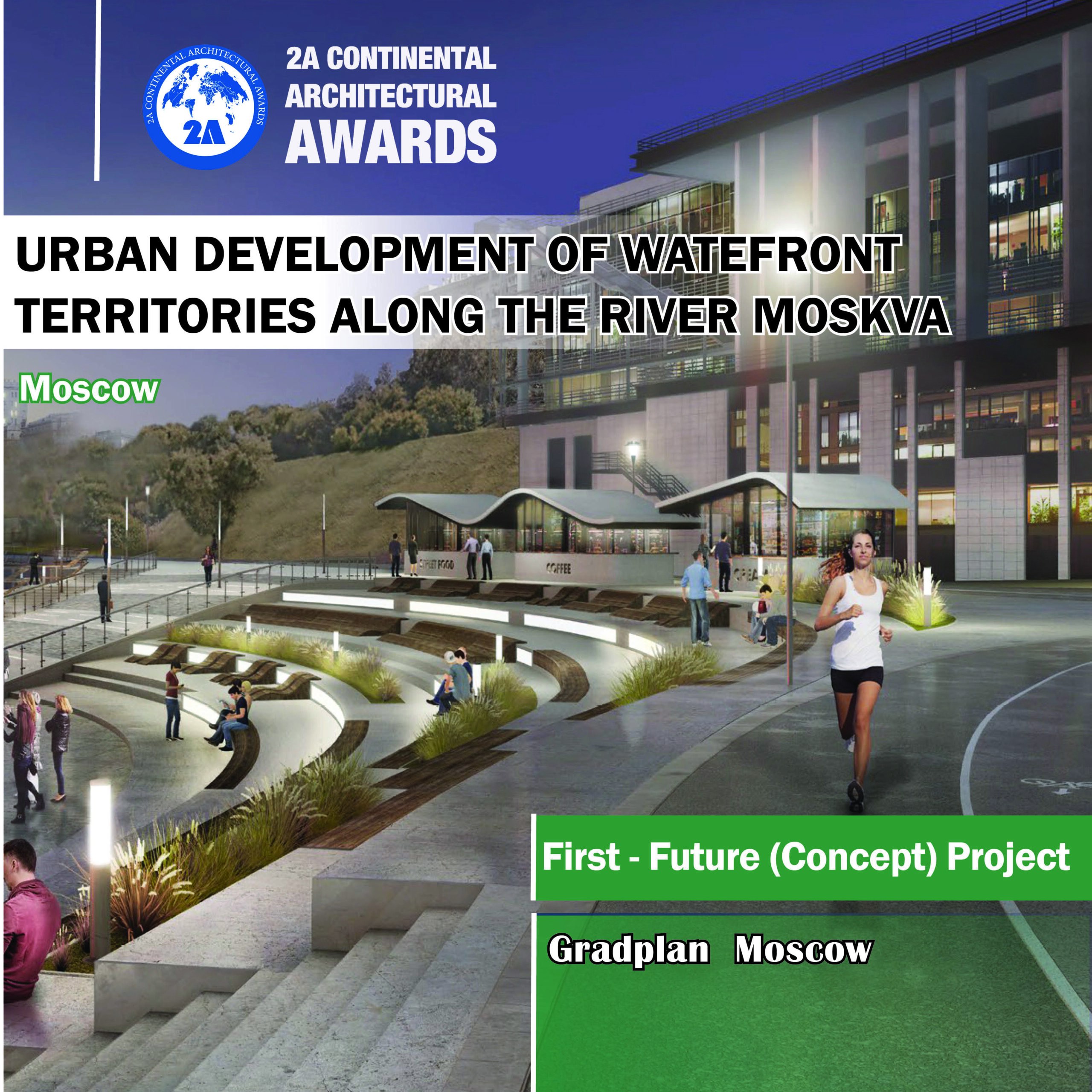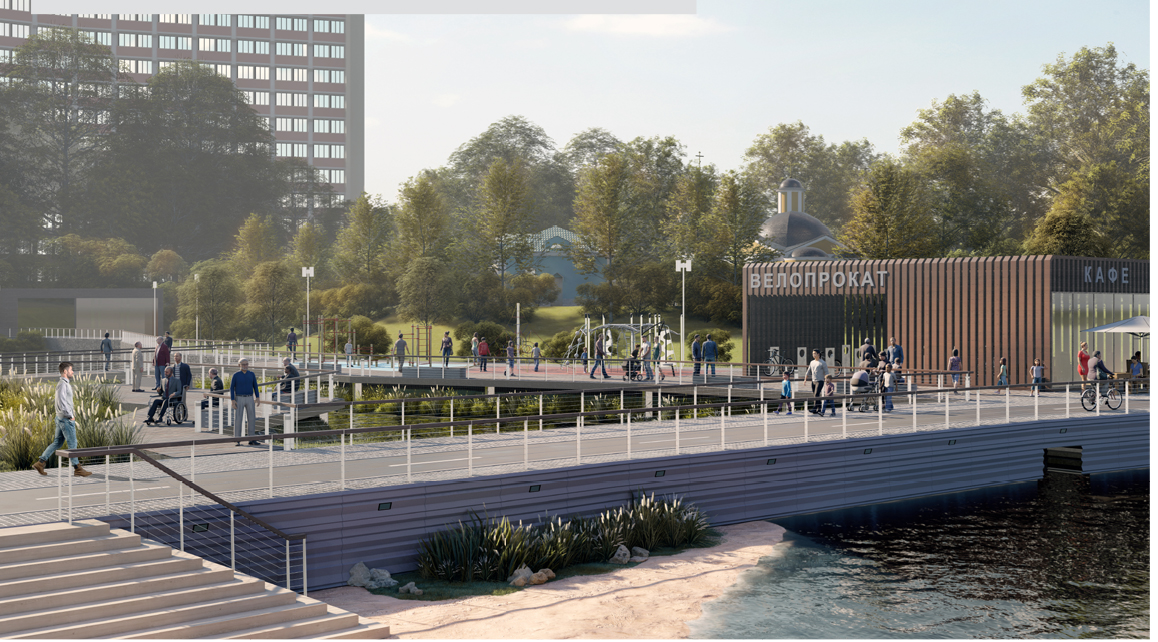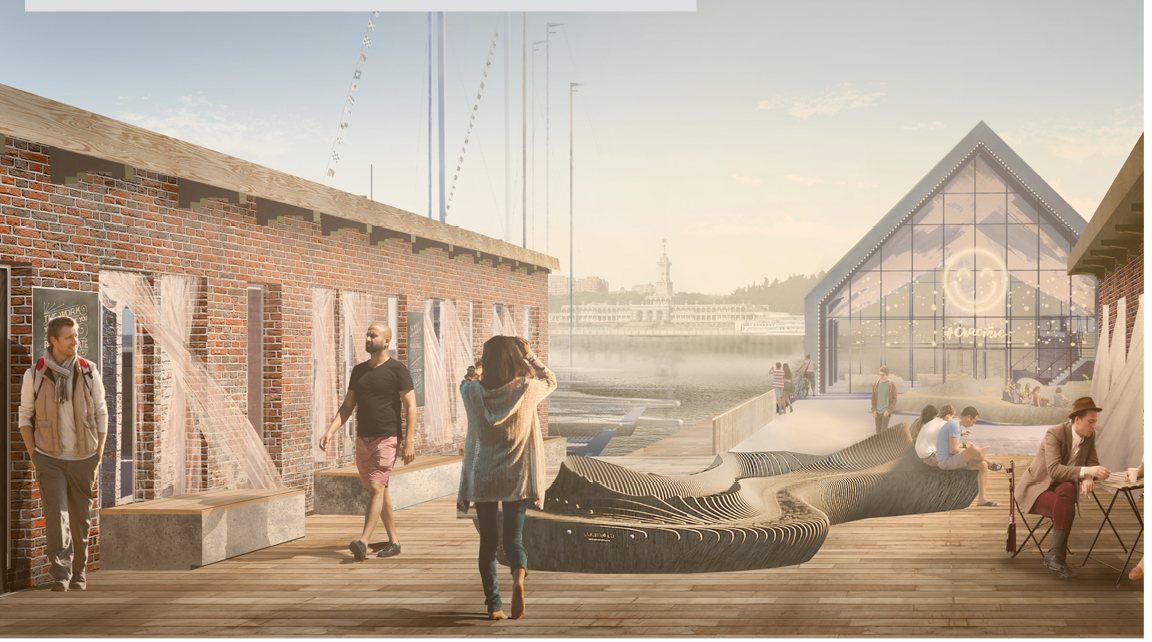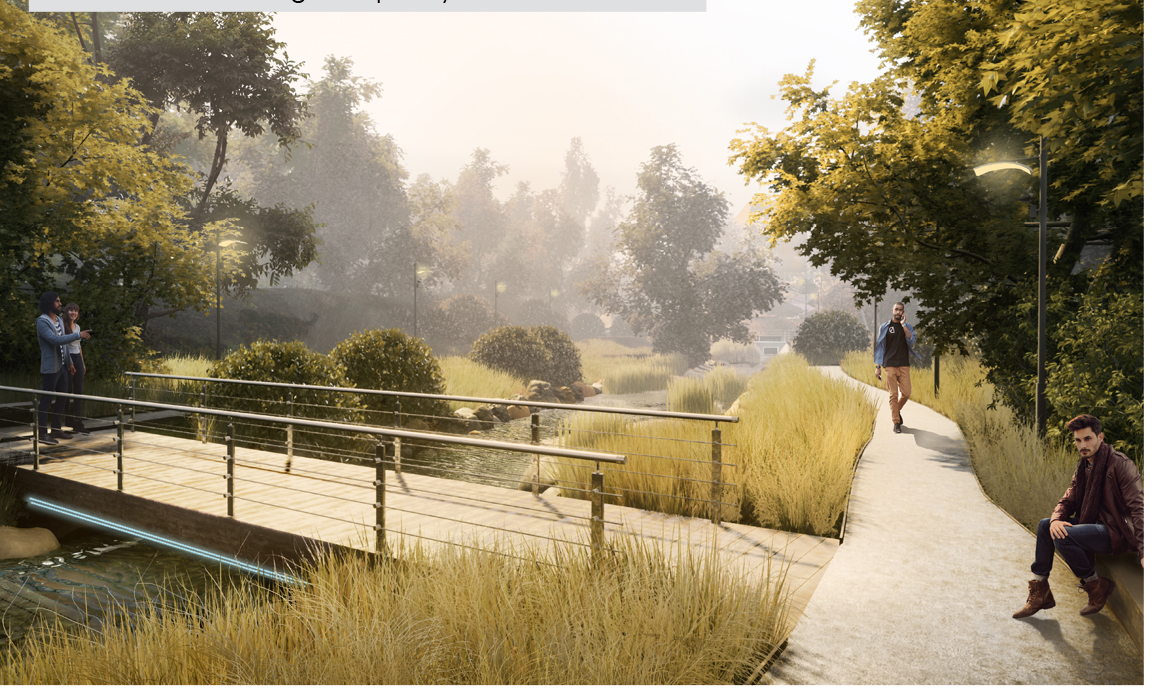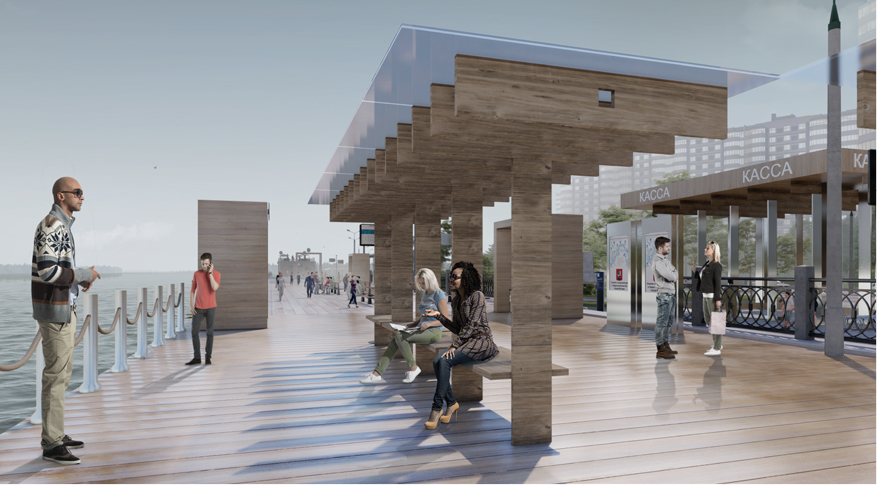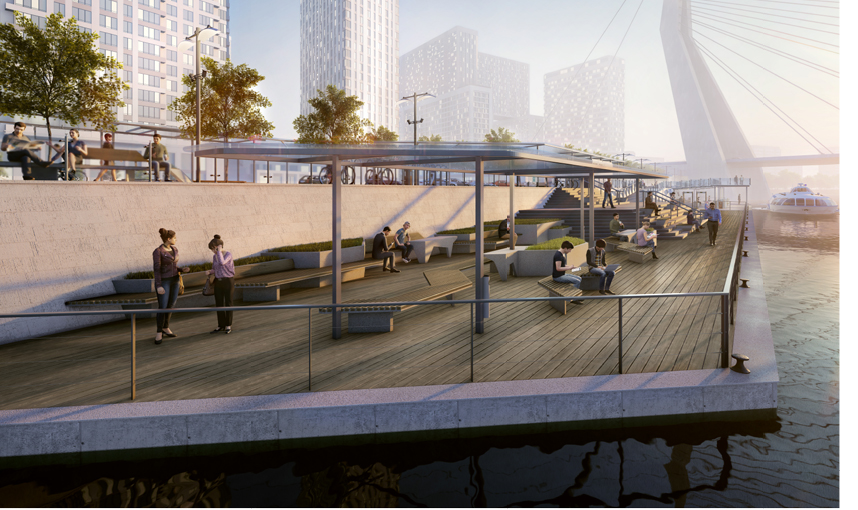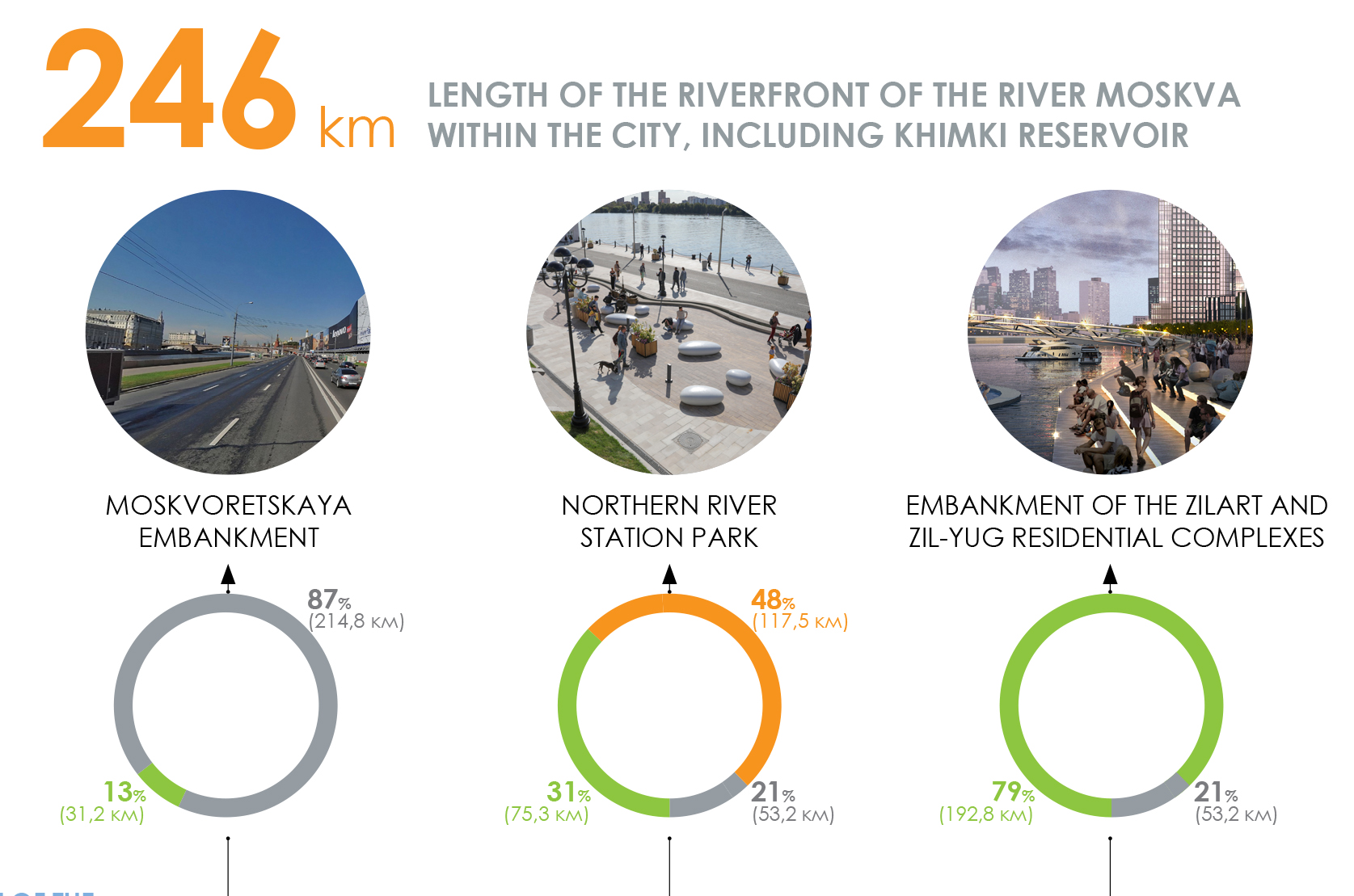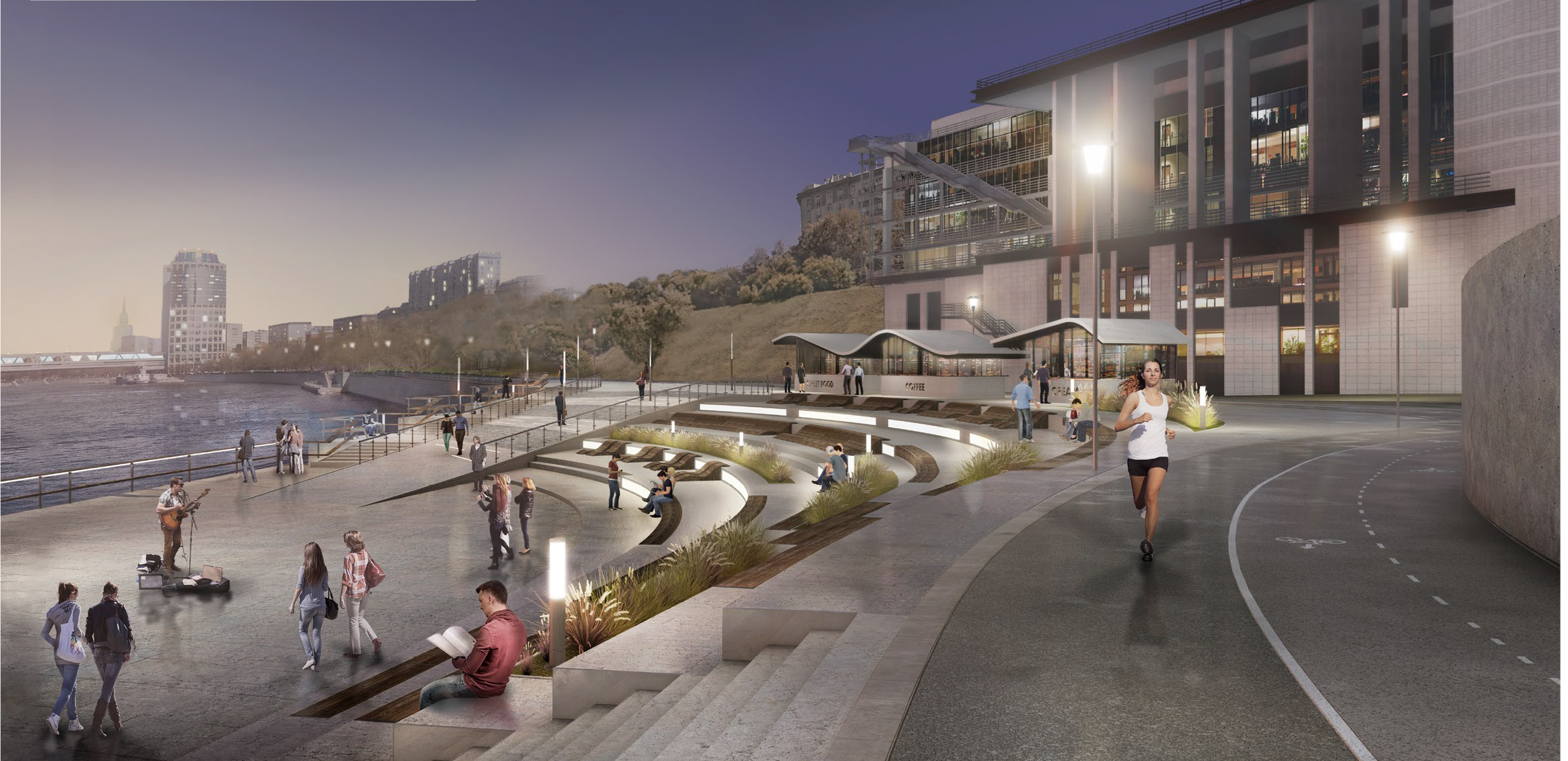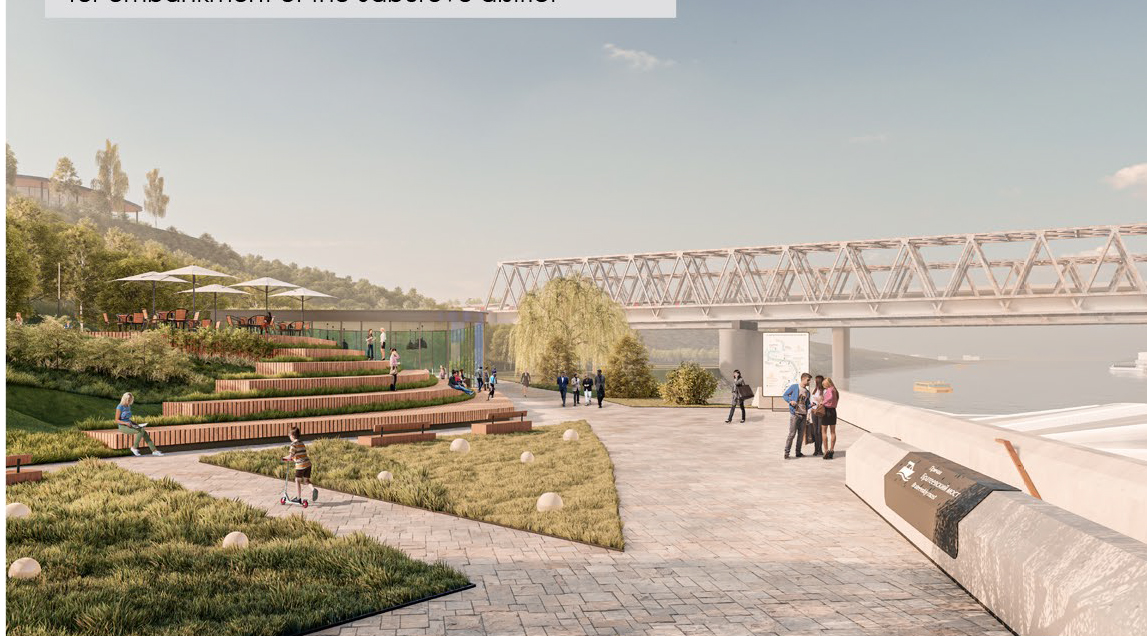First – Future (Concept) Project
Architect: Gradplan Moscow
Project’s Name: Urban Development of Waterfront Territories Along the River Moskva
( Moscow)
Project Description: The current tendency in transformation of capital cities is rational and effective use of their territorial resources. One important such resource is rivers.
In 2017 Moscow’s executive appointed the Research and Planning Institute for Moscow’s Urban Plan as single city operator for projects for development of waterfront areas along the River Moskva. In order to develop the riverbanks, the institute devised a strategy for development of territories abutting the River Moskva. The strategy aims to link together waterfront areas and integrate them into the urban fabric. Its basis is creation of a unified recreational framework and a continuous and multifunctional public space extending throughout the territory.
Stage-by-stage realization of the measures contained in the strategy is bringing the banks of the River Moskva into line with current principles for creating a high-quality urban environment (principles such as coherence, permeability, accessibility, and safety). These areas are viewed as new centres of attraction in Moscow.
Moscow’s principal aquatic artery is an important recreational and health-giving resource for citizens and a powerful instrument in the city’s regeneration, so a key part of the project was involving citizens in decision-making processes. Formats used for landscaping the waterfront areas for various kinds of leisure activity were determined on the basis of a comprehensive sociological survey of the opinions of citizens living in waterfront areas and of visitors to the riverbanks. This approach ensures inclusivity, with consideration being given to the needs of various groups of users. Additionally, the results of economic modelling of realization of the strategy show a positive tendency in capitalization of riverside territories.
In implementation of the strategy the institute has drawn up site layouts for riverside areas in order to: organize construction of new pedestrian bridges; eliminate processes leading to landslides and suffosions; develop an infrastructure of quays so as to establish aquatic public-transport routes along the River Moskva; construct new embankments; organize walking, running, and cycling routes; systematically landscape areas and plant vegetation in them; and create necessary utilities infrastructure.
Today the River Moskva is on its way to becoming a new unified linear centre for the city with a uniformly high quality of urban environment, public spaces, and landscaping along the entire length of the river.
